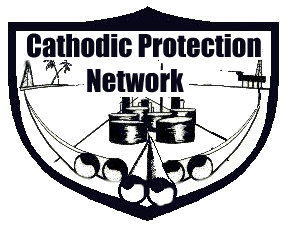
Cathodic Protection Training Course
Module 7
Interference

Proximity of foreign structures.
The very first activity of a corrosion control engineer is to conduct an overview of the problem area as described by the client which can be simply that they want to construct a pipeline through a new area.
Aerial photographs and existing maps should be examined as well as any plans and 'as built' drawings available from others in the area.
ALL structures should be mapped and examined to ascertain the electrical disturbances that they cause in the ground that they occupy.
Concrete and brick constructions invariably contain some metal that causes a footprint in the electrical potential at surface level. This can be detected and plotted using the two half-cell procedure. This is not possible using DCVG equipment as the nature of the instrumentation is inadequate.
Structures such as water towers, pylons, wind turbines, church spires etc will all have earthing systems to conduct lightning strikes to the ground. These will be earthed using copper or bronze alloys taht will be in electrical flux with their surroundings.
Generators will be earthed and there can be an inbalance of the three phases. This can surges taht can be rectified by the layer of oxides on a pipeline surface at a coating fault. This in turn causes a build up of charge in that length of the pipeline which leaks back to earth at other coating faults..... the metal will disolve at these places.
The purpose of this overview is to relate reality to an electrical circuit on a vast scale that includes the cathodic protection systems and all other causes of electrical flux. It is cinvenient to use the facilities of Google mapping as this offers realistic zooming so that it is possible to relate individual corrosion cells through to complete pipeline systems. These can then be modelled using the mathmatical power of computer analysis.
back to Module07 index page